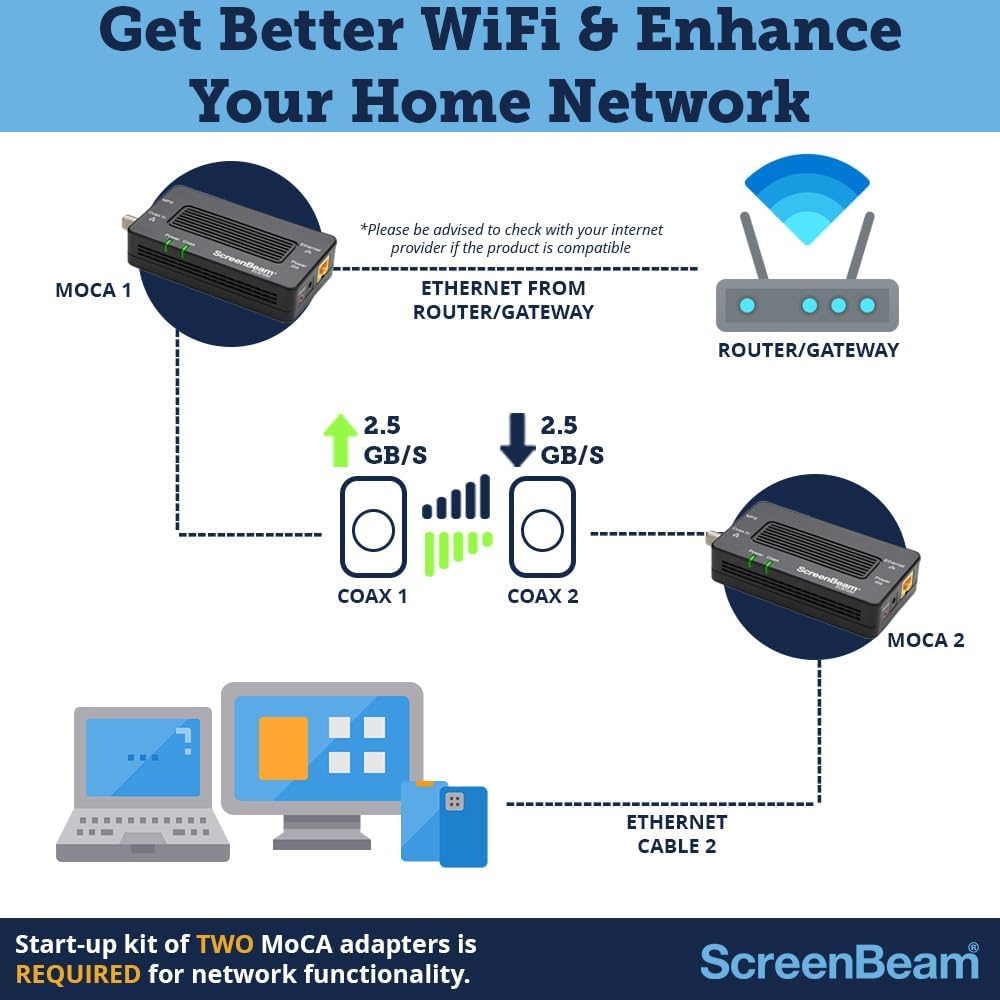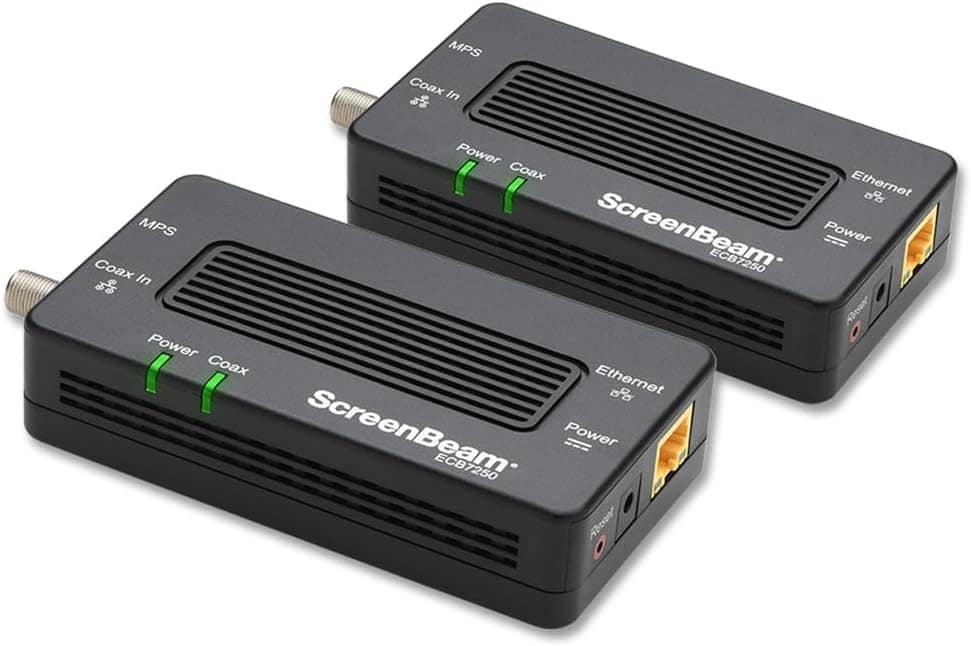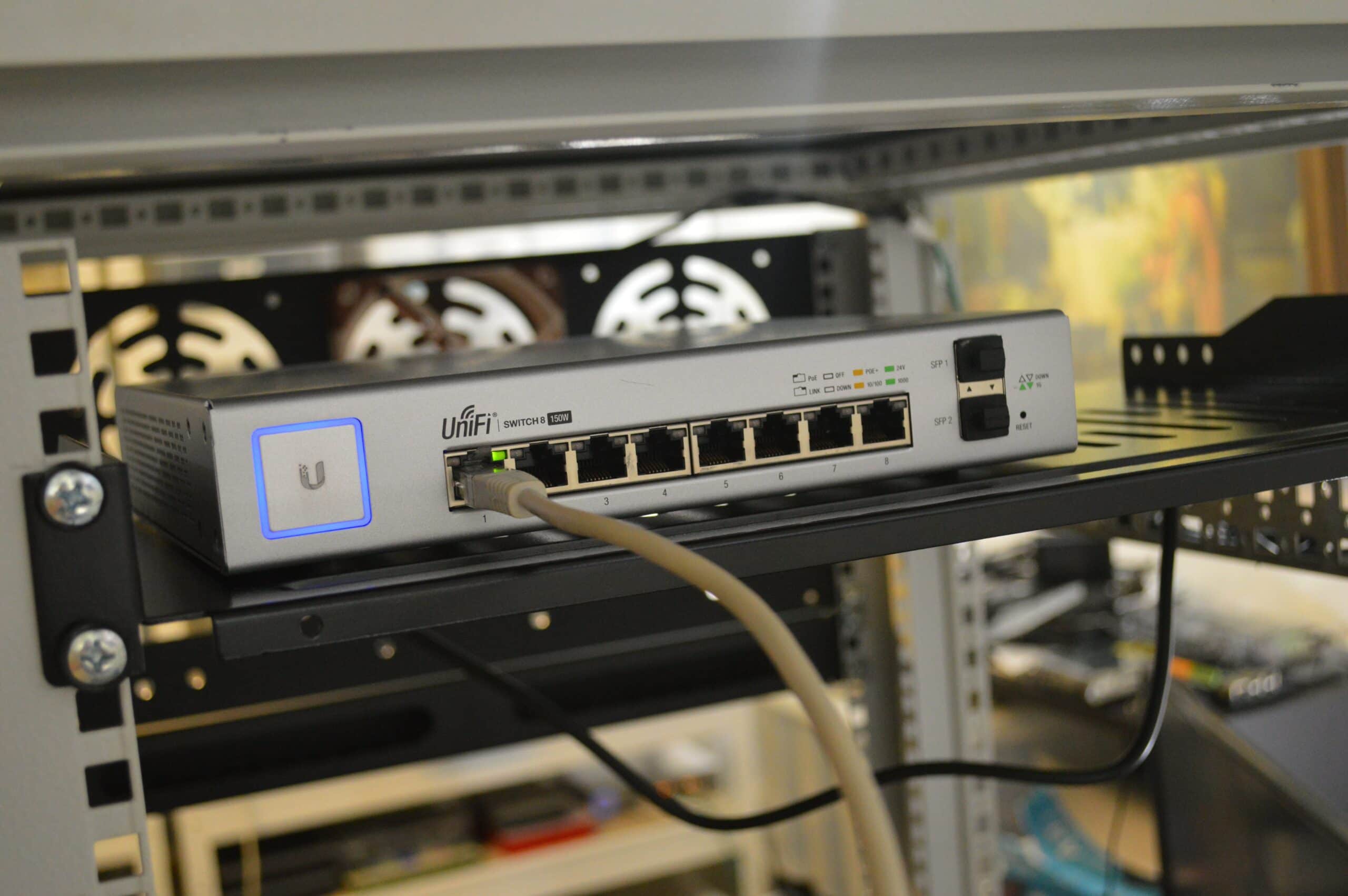Ethernet is the industry standard for wired computer networks, and it is by far the best option overall as it is designed for this specific job and has the best performance overall.
Whenever possible, it will always be best to use wired Ethernet. Using Cat6a or Cat7 cables will allow you to future-proof your network, making it capable of up to 10Gbps connectivity.
However, most homes are not pre-wired with Ethernet, and this, therefore, makes it an expensive intrusive if you want to wire up your home properly.
I have managed to wire up my home in a complete cowboy/ham-fisted way by running cables through my loft into the upstairs rooms and then running cables under the eaves of my roof going down into the downstairs living areas. It is not the most elegant solution, but it works (for now).
Some homes are wired up with coaxial cables, which were originally laid to deliver TV signals to the different rooms in our homes. This was a common solution for many US homes, but it was also widely used in the UK to varying degrees.
These cables can be used for data connections, and they can, in theory, provide superior performance than other connections such as WiFi or Powerline.
MoCA doesn’t have the same performance as Ethernet, but modern adopters can do up to 2.5Gbps bandwidth. Which is much better than you will likely get from WiFi/Powerline.
MoCA (Multimedia over Coax Alliance)

MoCA is a standard that uses the existing coaxial cables in your home to transmit data. Coaxial cables are the same kind used for cable TV and Internet.
Advantages of MoCA:

- Utilizes existing coaxial cables: If your home is already wired with coaxial cables (like most are), you can easily establish a MoCA network without having to drill holes or run new cables. This can save you a lot of time and effort.
- High speed: MoCA can support up to 1 Gbps network speeds, which is similar to the capability of many Ethernet networks.
- Low latency: MoCA networks often provide lower latency than wireless connections, which can be beneficial for applications like gaming or video conferencing.
- Reliable: Because it’s a wired connection, MoCA is often more reliable than wireless networks, especially in environments with a lot of wireless interference.
Disadvantages of MoCA:
- Requires MoCA adapters: To use MoCA, you will need a MoCA adapter at each end of the connection. These adapters can be somewhat expensive.
- Potential for signal interference: While MoCA is generally quite reliable, it can sometimes experience interference from other devices using the same coaxial cable, such as cable TV or Internet service.
Ethernet
Ethernet is a widely used standard for wired networks. It uses twisted pair cables to transmit data between devices.
Advantages of Ethernet:
- High speed: Ethernet can support very high-speed networks. Standard Gigabit Ethernet supports speeds up to 1 Gbps, and 10-Gigabit Ethernet is also increasingly common.
- Low latency: Ethernet provides very low latency, which is ideal for gaming, video streaming, and other latency-sensitive applications.
- Wide compatibility: Because Ethernet is so widely used, virtually all networked devices have an Ethernet port. This makes it easy to connect devices to an Ethernet network.
- Reliable: Ethernet networks are very reliable, especially in environments with a lot of wireless interference.
Disadvantages of Ethernet:
- Requires running cables: To set up an Ethernet network, you will need to run Ethernet cables from each device to a switch or router. This can be time-consuming and may require drilling holes or running cables along baseboards.
- Limited distance: Ethernet has a limit of about 100 meters (328 feet) for cable runs. For larger homes or properties, this may not be sufficient.
Which to choose?
The choice between MoCA and Ethernet will depend on your specific situation. If your home is already wired with coaxial cables and you don’t want to run new cables, MoCA may be a good choice. On the other hand, if you need to connect devices over a longer distance, or if you prefer a more universal and potentially higher-speed connection, Ethernet may be the better option.
In some cases, a combination of the two might be ideal. For example, you could use MoCA to establish a connection between two distant rooms, and then use Ethernet to connect individual devices within those rooms.

